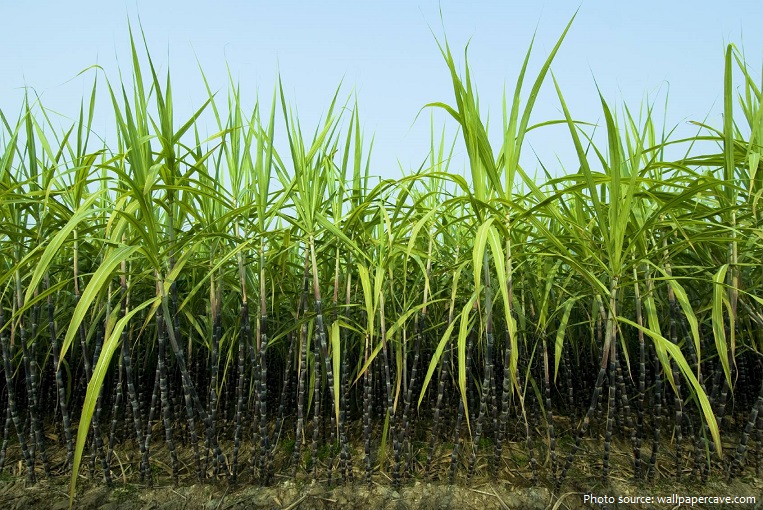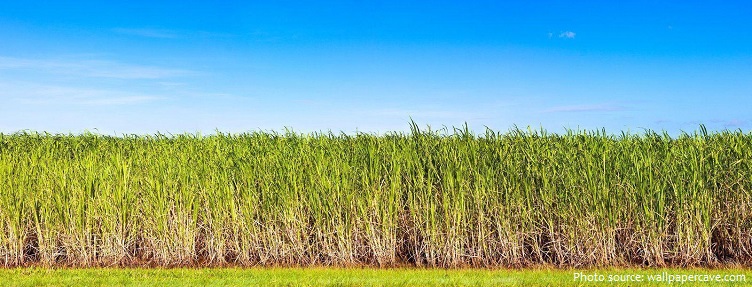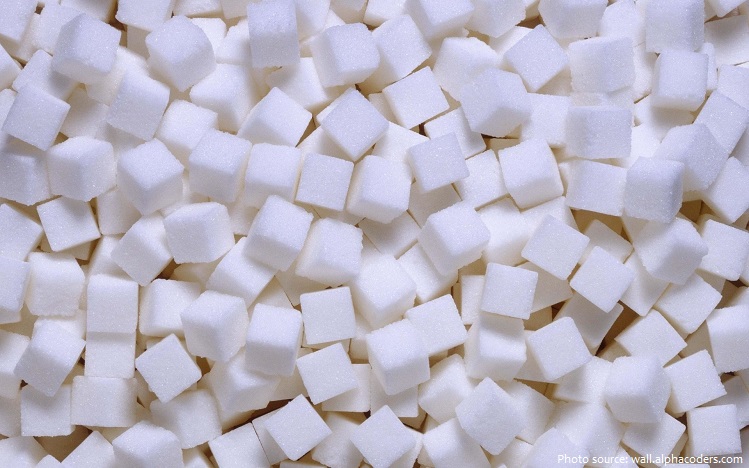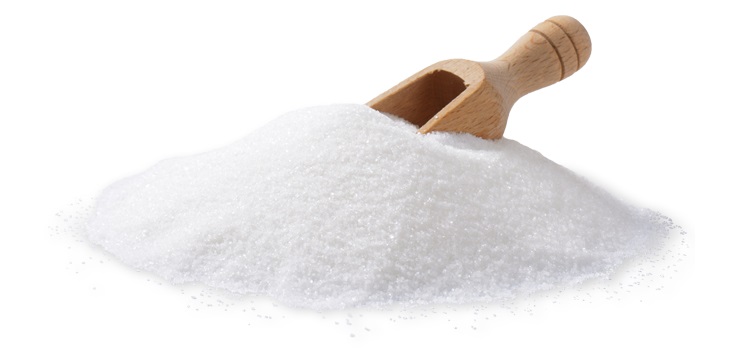
Sugarcane is perennial grass primarily cultivated for its juice from which sugar is processed.
It belong to the grass family, Poaceae, an economically important flowering plant family that includes maize, wheat, rice, and sorghum, and many forage crops.
The sugarcane plant produces a number of stalks that reach 2 to 6 metres (6 to 20 feet) high. The tough, semi-woody stalks of sugarcane are up to 5 cm (2 inches) in diameter, with leafy nodes and a moist internal pith containing 15-20% sucrose-sugar.
The sugar concentration is highest just before the plant flowers, so this is when harvesting occurs. The plants are propagated by cuttings placed into the ground, but a single planting can last several harvest rotations.

Sugarcane was an ancient crop of the Austronesian and Papuan people.
It was introduced to Polynesia, Island Melanesia, and Madagascar in prehistoric times via Austronesian sailors.
It was also introduced to southern China and India by Austronesian traders at around 1200 to 1000 BC.
One of the earliest historical references to sugarcane is in Chinese manuscripts dating to 8th century BC, which state that the use of sugarcane originated in India.
The Persians and Greeks encountered the famous “reeds that produce honey without bees” in India between the 6th and 4th centuries BC. They adopted and then spread sugarcane agriculture.

By 400 BC, methods for manufacturing sugar from sugarcane had been developed in India. Merchants began to trade in sugar, which was considered a luxurious and expensive spice, from India.
Only after the Crusades, whose soldiers returned with what they perceived to be “sweet salt,” did sugar begin to rival honey as the sweetener in Europe.
Early in the 12th century, Venice acquired some villages near Tyre and set up estates to produce sugar for export to Europe. It supplemented the use of honey, which had previously been the only available sweetener.
In the 15th century, Venice was the chief sugar refining and distribution center in Europe.

Also in the 15th century, Columbus sailed to the Americas, the “New World”. It is recorded that in 1493 he took sugarcane plants to grow in the Caribbean. The climate there was so advantageous for the growth of the cane that an industry was quickly established.
The first distillation of rum took place on the sugarcane plantations of the Caribbean in the early 17th century. Tradition suggests rum first originated on the island of Barbados.
In the 18th century, sugarcane plantations began in Caribbean, South American, Indian Ocean and Pacific island nations and the need for laborers became a major driver of large migrations of people, some voluntarily accepting indentured servitude and others forcibly exported as slaves.

In the British Empire, slaves were liberated after 1833 and many would no longer work on sugarcane plantations when they had a choice. British owners of sugarcane plantations therefore needed new workers, and they found cheap labour in China and India.
Until the late 19th century, sugar was purchased in loaves, which had to be cut using implements called sugar nips. In later years, granulated sugar was more usually sold in bags.
Sugar cubes were produced in the nineteenth century. The first inventor of a process to produce sugar in cube form was Moravian Jakub Kryštof Rad, director of a sugar company in Dačice. He began sugar-cube production after being granted a five-year patent for the process on January 23, 1843.

Cuban sugar derived from sugarcane was exported to the USSR, where it received price supports and was ensured a guaranteed market. The 1991 dissolution of the Soviet state forced the closure of most of Cuba’s sugar industry.
Sugarcane remains an important part of the economy of Guyana, Belize, Barbados, and Haiti, along with the Dominican Republic, Guadeloupe, Jamaica, and other islands.
Today, most of the world’s sugarcane is grown in subtropical and tropical areas.
Over 75 percent of the world’s sugar comes from sugarcane.

The term “sugarcane” is a combination of two words – sugar and cane. The word “sugar” meaning ultimately derives from Sanskrit śarkarā, meaning “ground or candied sugar,” came Persian shakar, then to 12th
century French sucre and the English sugar. The second term “cane” began to be used alongside it as the crop was grown on plantations in the Caribbean, this term is ultimately of Hebrew-origin from קנה meaning “reed” or “stalk”. This term was introduced by Sephardic Jews in the 17th century in the French West Indies (Guadeloupe and Martinique), who spoke Judeo-Spanish and owned sugar plantations worked by their African slaves which produced sugarcane crop, until they were expelled by king Louis
XIV in 1685 as part of the Code Noir.
The most sugarcane cut by hand in eight hours is 50 tonnes (110,231 lb). This was achieved by Roy Wallace on 9 October 1961 at a sugar farm in Giru, Australia.